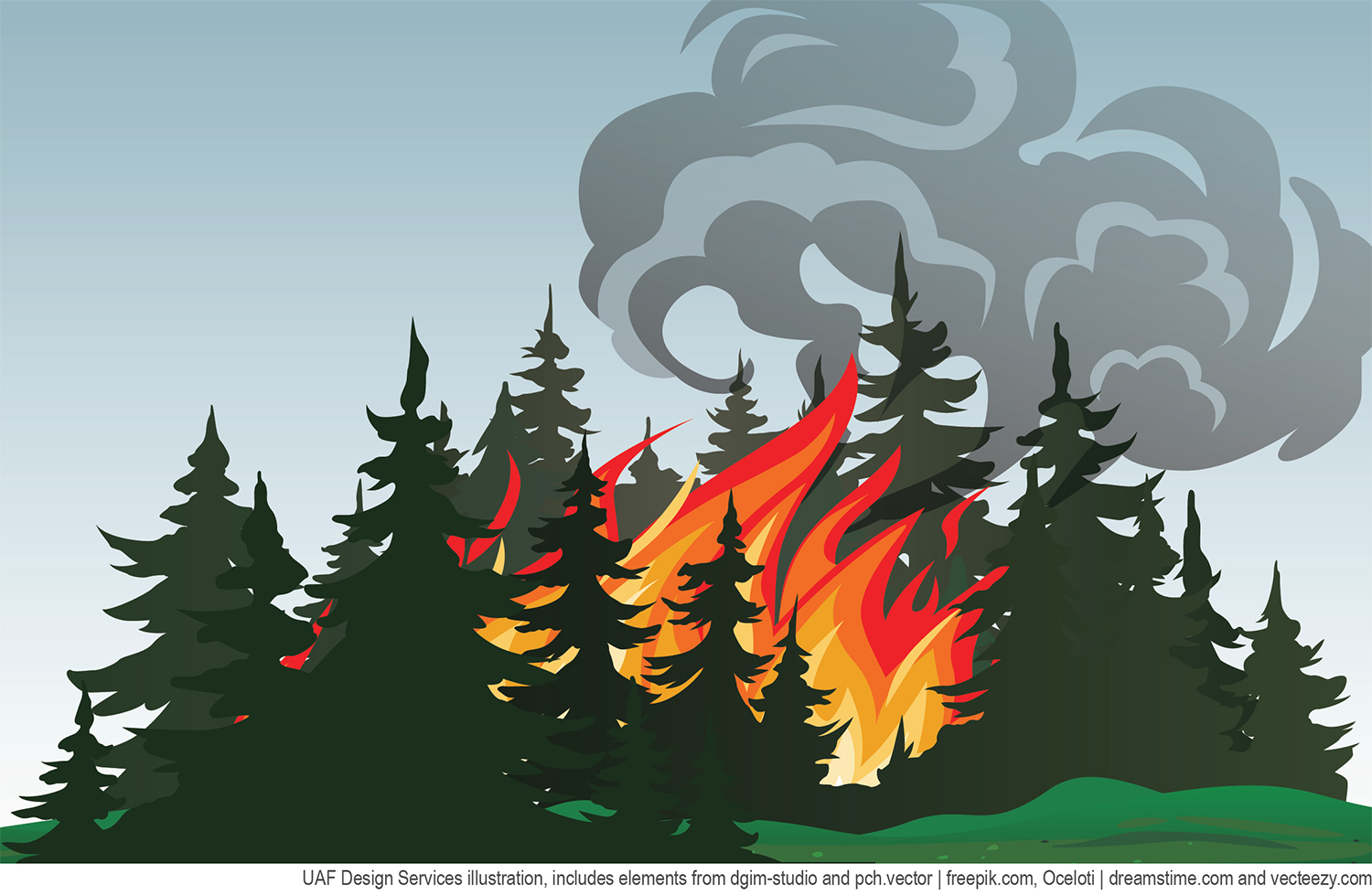Fire curriculum
 The Fire & Ice Diversity, Education and Workforce Development (DEW) component has developed a set of five fire lessons in collaboration with the BLM Campbell Creek Science Centerand the Fairbanks North Star Borough School District 21st Century Learning Program. The curriculum is designed for 3rd-5th grade learners but content can be adapted
for lower or higher grade levels.
The Fire & Ice Diversity, Education and Workforce Development (DEW) component has developed a set of five fire lessons in collaboration with the BLM Campbell Creek Science Centerand the Fairbanks North Star Borough School District 21st Century Learning Program. The curriculum is designed for 3rd-5th grade learners but content can be adapted
for lower or higher grade levels.
The curriculum engages students in observation and science sense-making through fun, interactive activities such as storytelling and gameplay. The lessons explore wildfire as a naturally occurring cycle that can be influenced by human activities.
Individual lessons are available below, and the curriculum is also available as a two-download set (part 1 and part 2.) You can find links to curriculum videos on our YouTube page.
Background Information on Wildfires in Alaska (6 pages) gives science background about fires and describes the alignment of lessons with NGSS and Alaska State standards, including an emphasis on systems thinking.
Lesson 1: The Fire Cycle (9 pages) tells a story about the fire cycle and asks students to describe and theorize about the stages of the fire cycle by rearranging story cards.
Lesson 2: The Fire Triangle (8 pages) asks students to engage in observation and sense-making around the three parts of the fire triangle — fuel, oxygen, and heat.
Introduction to Lessons 3-5 (3 pages) describes the Forest Fire Scenario Game, an interactive activity that is a central element of the final three lessons.
Lesson 3: Fire Behavior - Basics (10 pages) has small groups work through a fire scenario and make a stop-motion animation to share with the class.
Lesson 4: Fire Behavior - Firefighters, Fuel Loads, Prescribed Burns (5 pages) has small groups work through different fire scenarios and discuss the outcomes with peers.
Lesson 5: Fire Behavior - Chance and Occurrence (6 pages) has small groups make a forest model and experiment with different conditions, observing what happens when factors such as climate, wind, and topography change.

